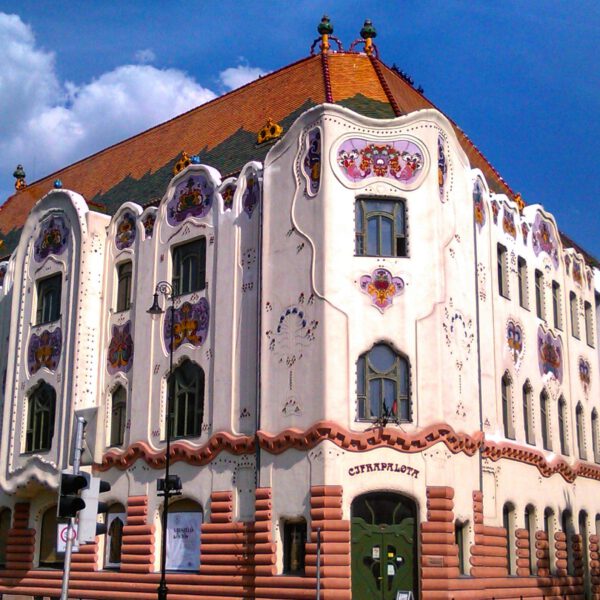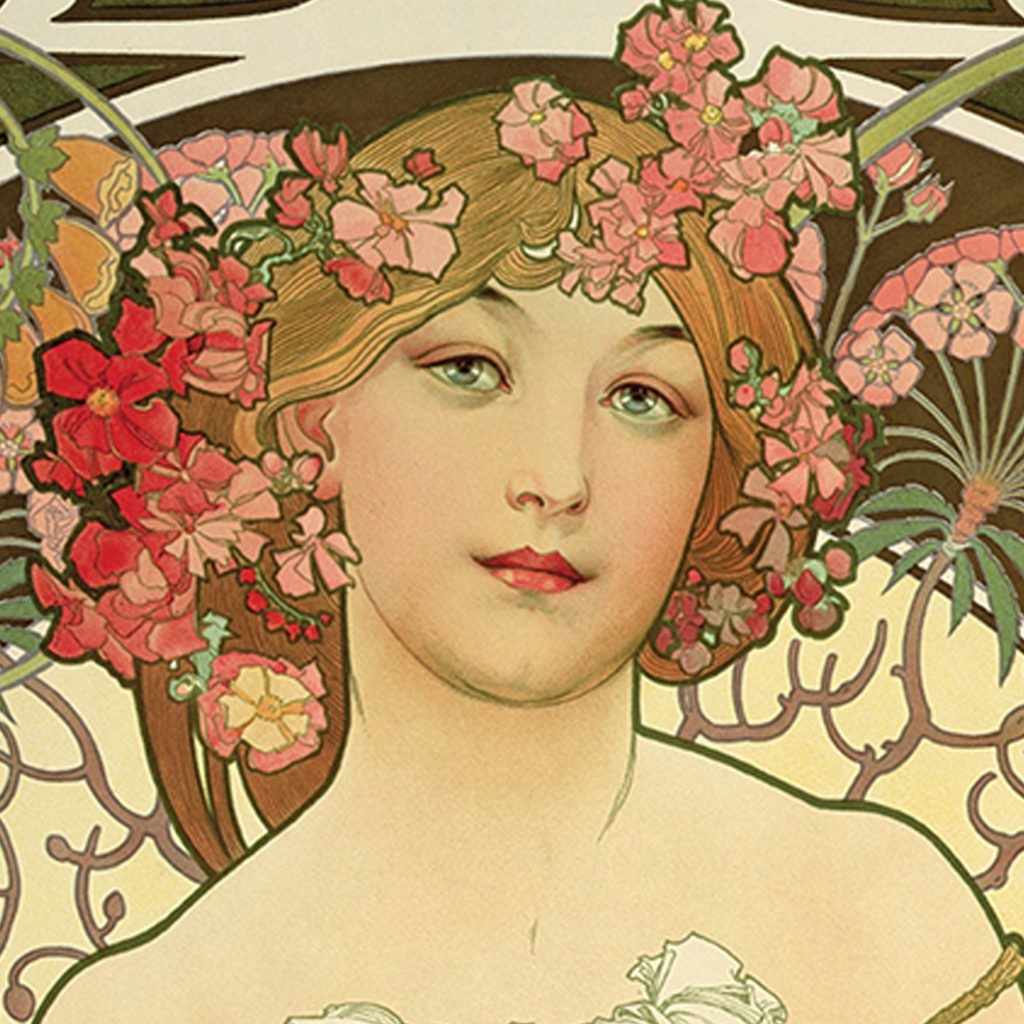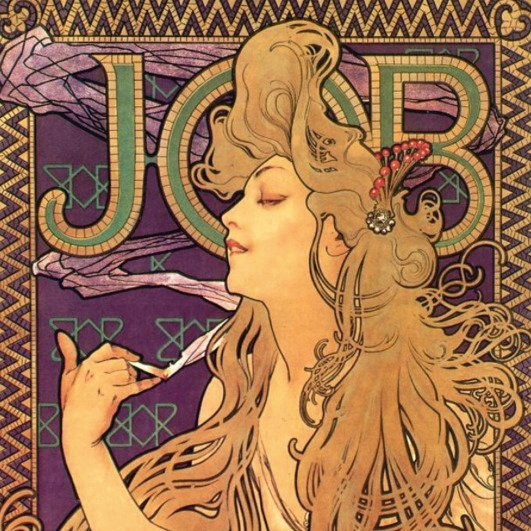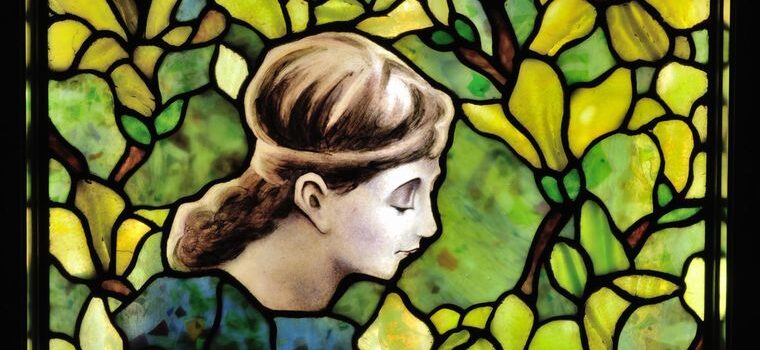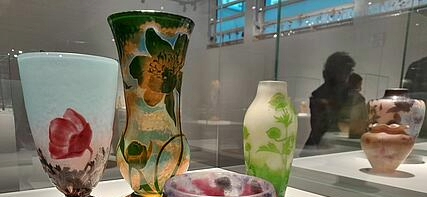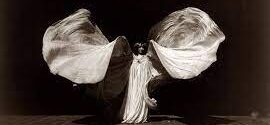Art Nouveau is recognized as an international style of art, architecture, and applied arts. It emerged towards the end of the 19th century, specifically in the final decade of that century, and became fully established between 1893 and 1895. The style flourished primarily during the period known as the Belle Époque, roughly between 1890 and 1910. It represented a departure from the academic art, eclecticism, and historicism prevalent in the late 19th century, striving for a “new art” to reflect the modern era.
A distinguishing characteristic of Art Nouveau is its profound inspiration drawn from natural forms as show various examples:
- Designs often feature the sinuous curves of plants and flowers.
- Decorative elements include stylized flowers, tendrils, and organic, asymmetric lines.
- Specific natural motifs frequently appear, such as dragonflies, seen in an Emile Gallé pedestal table from around 1900.
- Flower motifs are present in decorative arts, like the polychrome enamel cloisonné decor on a Longwy vase from the 1920s.
- The “Rose and Thistle” is depicted in a 1898 work by Louis Ernest Lessieux.
- An exhibition title, “The Triumph of Nature,” directly references this core inspiration.
- The School of Nancy, a significant center for Art Nouveau, uses themes of nature explicitly, highlighted by the phrase “L’École de Nancy: fleurs et ornements – ma racine est au fond des bois” (The School of Nancy: flowers and ornaments – my root is in the depth of the woods).
The connection between Art Nouveau and the concept of “spring” is most directly captured in the context of the Vienna Secession movement, which is considered a world-wide phenomenon related to Art Nouveau. The name “Secession” itself derives from secessio plebis, referring to the withdrawal of the common people in ancient Rome. In a quote related to the Secession, it is mentioned that when the country faced great danger, “every living thing brought forth during the next spring was…”. While the sentence is incomplete in the source, it explicitly links this significant moment in the emergence of Art Nouveau (the Secession) with the idea of renewal, growth, and new life associated with springtime. The use of abundant floral and organic motifs in Art Nouveau also evokes the flourishing vitality seen in nature during spring.
Key Historical Moments:
- Origins and Emergence (Late 19th Century): Art Nouveau arose as part of a movement seeking to break free from historical imitation and become modern. It emerged in the final decade of the 19th century and was established between 1893 and 1895. The Secession movement began in the late 19th century. Early works appeared in the 1890s. There was a push to create a new formal language for architecture.
- The Secession Movement: An important phenomenon linked to Art Nouveau. The Vienna Secession is mentioned, with its building bearing the motto: “Der Zeit ihre Kunst. Der Kunst ihre Freiheit” (To every age its art. To art its freedom). The first Secession exhibition was held in 1898. Artists like Gustav Klimt were involved with the Secession and faced issues with state patronage and censorship. Joseph Maria Olbrich designed the Vienna Secession Building.
- The Turn of the Century (c. 1900): This period saw the style fully developed, as seen in the Emile Gallé table “around 1900”. The style was often referred to as “style 1900” after its success at the Paris World’s Fair of 1900.
- The Paris World’s Fair (1900): This event is considered a culmination of the style, promoting it on a large scale. The style’s success here led to it being called “style 1900”. An English member of the Paris jury, George Donaldson, made a significant bequest to the Victoria and Albert Museum for purchasing furniture from the exhibition due to its “superior ingenuity and taste”.
- Peak Popularity (1890–1910): Art Nouveau flourished during this short period, building a bridge between past traditions and increasing industrialization.
- The Municipal House, Prague (1903–1912): This building is discussed as a case study of Art Nouveau architecture. It is considered an architectural Gesamtkunstwerk (total work of art), featuring mural paintings. Artist Alphonse Mucha faced opposition for his involvement, being seen as a foreign designer. The building’s design incorporates meaningful colors and inscriptions.
Geographical Reach and Variations:
Art Nouveau was an international movement, although its reception varied, sometimes being seen ambivalently as a national style or a foreign import. It had different names in various regions:
- Art Nouveau: Used in England and France.
- Jugendstil: Used in Germany.
- Secessionsstil: Used in Austria.
- Stile Liberty (or Stile inglese): Used in Italy, named after a British trading company. Italian “Liberty Style” was often characterized by an eclectic approach, combining new forms with traditional elements due to strong historical tradition and a desire for creative freedom. Examples exist in Florence, Montecatini Terme, Lucca, and Viareggio.
- Modernismo: Used in Spain and Catalonia.
Significant centers of Art Nouveau creativity included Paris, Nancy, Brussels, Barcelona, Glasgow, Vienna, Munich, Turin, New York, and Chicago.
- Vienna: A crucial center with figures like Otto Wagner and Joseph Maria Olbrich. Debates on modernity and city planning were prominent here. The Baroness House in Maribor, Slovenia, shows Viennese roots and influence.
- Prague: Discussed in relation to the Municipal House and the preservation of Czech Art Nouveau heritage. Alphonse Mucha’s work, including the Slav Epic, is linked to concepts of national identity.
- Nancy: Home to the École de Nancy. Art Nouveau here became strongly associated with regionalism. Preservation efforts gained momentum in the 1970s. Tourist information highlights Art Nouveau heritage.
- Hungary and the Czech Lands: Art Nouveau was linked to independence and nationalist movements, especially in the Habsburg monarchy. The style’s contradictory identity-building factors influenced its perception and preservation. Preservation history throughout the 20th century is discussed.
- Italy: Known as “Stile Liberty”. Characterized by a marked linear style and elegant decoration.
- The Danube Region: A project focused on the sustainable protection and promotion of Art Nouveau heritage in this area. This includes places like Târgu Mureş in Hungary, Maribor in Slovenia, and towns in Romania. Public buildings from the early 20th century in Romanian towns show examples and their revitalization.
Art Nouveau also manifested in various disciplines beyond architecture, including furniture, ceramics, graphic design, typefaces, bookbindings, posters, textiles and fashion, and decorative arts in general.
Decline and Revival:
The style began to decline around 1910 and was largely abandoned by 1918, partly because it seemed outdated and limited and due to the impact of the First World War, which inspired a new aesthetic. The style disappeared equally quickly as it appeared. For decades, it faced criticism, being seen as excessively ornamental and lacking substance, and was sometimes destroyed. In Hungary, for example, Art Nouveau heritage faced threats under the proletarian dictatorship after 1948, which sought to erase symbols of “bourgeois traditions”.
However, Art Nouveau experienced a revival starting in the 1960s. Exhibitions, such as one at MoMA in New York in 1959, played a role in bringing it to a wider audience. The interest from Anglo-Saxon and Japanese collectors and solid academic work in the early sixties contributed to rediscovering the importance of centers like the École de Nancy. Preservation efforts for built heritage began later, for instance, in Nancy in the mid-seventies, and the School of Applied Arts in Strasbourg was listed as a historic monument in 1981. Reconstructions have been carried out, such as in Budapest from the nineties.

